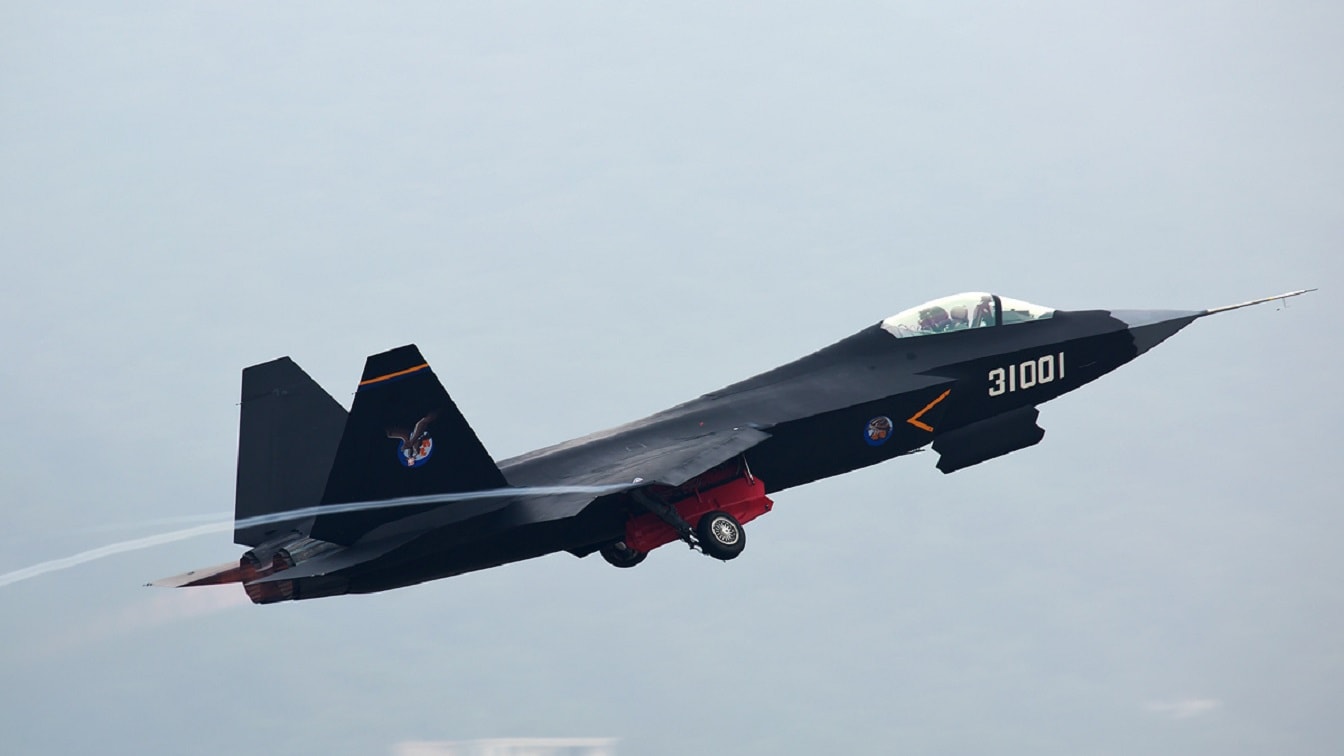The Shenyang J-35A, a fifth-generation stealth fighter developed by the Shenyang Aircraft Corporation (SAC), represents a significant leap in China’s military aviation capabilities.
This aircraft is not only a testament to China’s growing technological prowess but also a critical component of its broader strategy for power projection and regional dominance.
The J-35A is more than a single fighter jet, it is the culmination of years of effort on China’s part to catch up with the United States in the area of aerospace technology.
The J-35A is a twin-engine, all-weather, multirole stealth fighter designed for both air superiority and surface strike missions. It is a derivative of the FC-31 Gyrfalcon, a prototype that first flew in 2012.
The J-35A made its debut at the 2024 China International Aviation & Aerospace Exhibition, showcasing its advanced capabilities and marking China’s entry into the elite club of nations with multiple fifth-generation stealth fighters.
The J-35A features several design elements aimed at enhancing its stealth capabilities, including diverterless supersonic inlets (DSI), edge-aligned control surfaces, and internal weapons bays. These features help minimize the aircraft’s radar cross-section, making it harder to detect by enemy radar systems.
The J-35A is powered by Chinese-made Guizhou WS-19 turbofans, which provide improved performance over the Russian RD-93 engines used in earlier prototypes.
Why China Needs the J-35A
The development of the J-35A is a significant milestone for China for several reasons. Firstly, it is a major technological achievement for China’s aerospace industry. It demonstrates China’s ability to develop advanced stealth technology and produce sophisticated military hardware independently.
Not only that, as the J-20 demonstrates, China is capable of building fifth-generation fighters in large numbers. It appears that China has found the balance between quality and quantity.
Secondly, the J-35A is a key component of China’s ongoing military modernization efforts. It enhances the capabilities of the People’s Liberation Army Air Force (PLAAF) and the People’s Liberation Army Naval Air Force (PLANAF), providing them with a versatile platform capable of performing a wide range of missions.
Lastly, the J-35A serves as a powerful deterrent against potential adversaries. Its advanced stealth capabilities and multirole functionality make it a formidable opponent in any conflict scenario, thereby strengthening China’s defensive posture.
How the J-35A fits into China’s Broader Strategy
China’s strategy of power projection involves extending its military reach and influence beyond its borders to protect its interests and assert its dominance in the region. The J-35A plays a crucial role in this strategy in several ways. One of the most significant aspects of the J-35A is its compatibility with aircraft carriers.
The aircraft is optimized for catapult-assisted takeoff (CATOBAR), making it suitable for deployment on China’s newest aircraft carriers, such as the CV-18 Fujian. This capability significantly enhances China’s naval aviation capabilities and allows it to project power far from its shores.
Additionally, the J-35A’s advanced capabilities enable China to assert its dominance in key regional hotspots, including the South China Sea and the Taiwan Strait. Its stealth features and multirole functionality make it an effective tool for both offensive and defensive operations in these contested areas.
Furthermore, the J-35A acts as a force multiplier for the PLAAF and PLANAF, enhancing their overall combat effectiveness. Its ability to perform a wide range of missions, from air superiority to ground strikes, makes it a versatile asset that can be deployed in various scenarios.
The J-35A Was Built for a Taiwan War
The introduction of the J-35A has significant implications for Taiwan, which has long been a focal point of tensions between China and the United States. The J-35A’s advanced capabilities and its role in China’s power projection strategy pose several challenges for Taiwan. The J-35A enhances China’s ability to conduct operations in and around Taiwan.
Its stealth capabilities make it difficult for Taiwan’s air defense systems to detect and track, increasing the threat of surprise attacks. The J-35A’s advanced avionics and weapon systems give China a significant edge in achieving air superiority over Taiwan.
This could complicate Taiwan’s efforts to defend its airspace and maintain control over its air operations.
The presence of the J-35 in the region increases the strategic pressure on Taiwan. It forces Taiwan to invest in advanced defense systems and maintain a high state of readiness to counter potential threats from the Chinese mainland.
The J-35A also serves as a tool of deterrence and diplomacy for China.
Its deployment sends a clear message to Taiwan and its allies, particularly the United States, about China’s growing military capabilities and its willingness to use them to achieve its strategic objectives.
The J-35 is a critical asset for China’s military and a key component of its strategy for power projection and regional dominance. Its advanced stealth capabilities, multirole functionality, and compatibility with aircraft carriers make it a formidable platform that enhances China’s military capabilities and poses significant challenges for Taiwan.
As China continues to modernize its military and expand its influence, the J-35A will play an increasingly important role in shaping the strategic landscape of the Indo-Pacific region.
About the Author: Isaac Seitz
Isaac Seitz, a 19FortyFive Defense Columnist, graduated from Patrick Henry College’s Strategic Intelligence and National Security program. He has also studied Russian at Middlebury Language Schools and has worked as an intelligence Analyst in the private sector.

